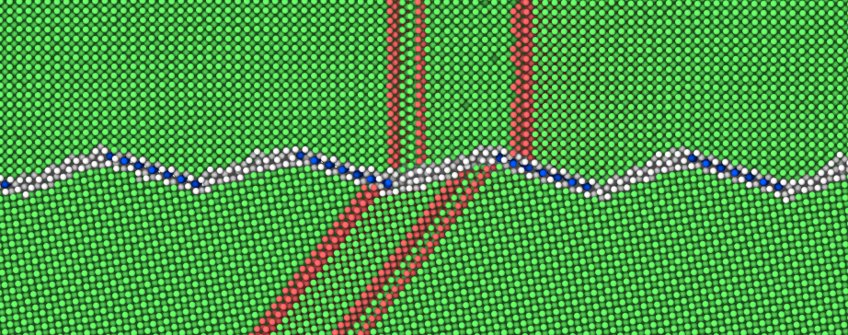
Atomistic Modelling of Material Interfaces
The structure and behaviour of interfaces—such as grain boundaries, which are abundant in virtually all materials used in engineering applications—is of ever-increasing interest to those trying to understand and improve the properties of micro- and nanostructured materials. Computer simulations at an atomistic scale come in where experiments are necessarily limited: High spatial and temporal resolution, as well as the possibility to quickly produce clean model setups, allow us to understand the mechanisms of phase transitions and mechanical deformation at the scale where they occur.
Currently, we are focussing on grain boundary phases of copper and aluminum alloys and their influence on mechanical properties, which is the topic of the ERC project GB Correlate. The existence of such phases is well known from a theoretical standpoint, but their actual observation and thermodynamic characterisation can still be challenging. Furthermore, we are still at the very beginning of understanding and making use of these phenomena for practical applications. How can we control those grain boundary phases and in what ways can they be useful to tailor material properties? What should be the guiding principles to maniplate material interfaces? A critical ingredient to our research is thus the close collaboration with the institute’s experimentally-oriented research groups. Insights from the simulation can be tested and applied on real materials and new experimental findings can be investigated in the computer in more detail.
Our tools of choice are methods using empirical potentials, such as molecular dynamics and importance-sampling Monte Carlo algorithms. These give us access to the relevant length scales of tens to hundreds of nanometres where the basic phenomena of interest occur. In addition to standard methods, we are also developing an interest in improving the tools of the trade to reduce their timescale limitations and to come closer to the experimental reality. In these matters, we share the interests and partner with the department Computational Materials Design.